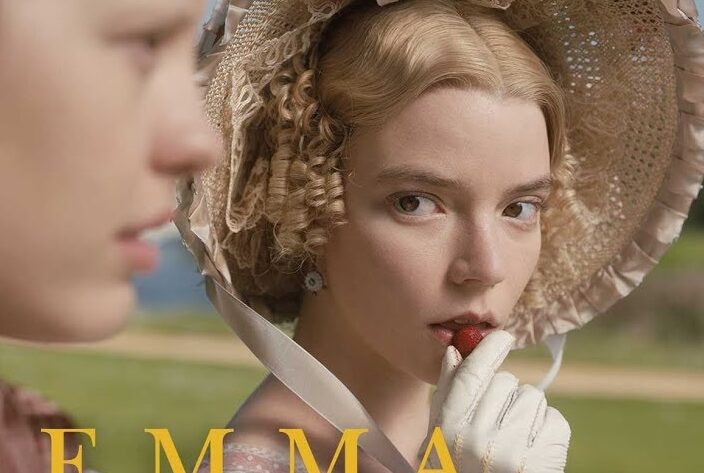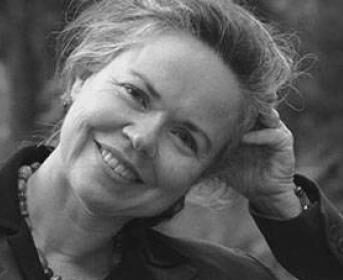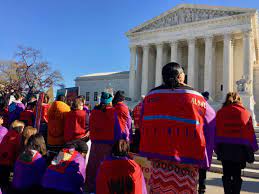In Emily Auerbach’s critical piece “An Imaginist Like Herself,” Auerbach argues that Emma asks contemporary readers to “open their minds to new ideas about what a marriage should be” through undermining the traditional ideas of early-nineteenth century marriage in which man is master and woman is submissive to his rule (Auerbach 439).
| Auerbach asserts that the parallel marriages of Emma Woodhouse and Mr. Knightley, Frank Churchill and Jane Fairfax, and Harriett Smith and Robert Martin provide each character with a complementary counterpart. As these are the characters who are rewarded at the end of the novel with happy marriages, Auerbach argues that by constructing such a narrative, Austen’s Emma offers a depiction of marriage as equally beneficial to both parties, rather than the traditional dominant and submissive relationship. Auerbach, towards the end of her argument, asserts Emma to be a feminist text due both the text passing narrative judgement on characters who attempt to adhere to such ideals, such as Mr. and Mrs. Elton, and more importantly, to the text praising characters who circumvent traditional ideas of matrimony, which she defines to include Mr. Knightley and Emma Woodhouse. Though I hold the argument posed by Auerbach to hold mostly accurate, this reading of Emma is much in need of a qualifier, or at the very least an extension. In my reading of Emma, the three parallel marriages of Emma Woodhouse and Mr. Knightley, Frank Churchill and Jane Fairfax, and Harriet Smith and Robert Martin are not equally beneficial to both parties. Herein, I will argue, lies the feminist twist of Emma – not restricted to Emma Woodhouse alone, but extended to Jane Fairfax and Harriet Smith as well. These three principal women in Emma receive more out of their marriages than they sacrifice – Emma receiving the ability to remain at Hartsfield, thereby maintaining her position as the dominant female in Highbury, Harriet receiving the community, love, and familial belonging she never possessed, and Jane receiving both class mobility and agency over her destiny. While I will agree with Auerbach in stating that both parties benefit from each of their respective marriages, I will maintain that the benefits are not entirely equal, for the women in Emma come away far better, and are asked to sacrifice far less, than their male counterparts. The feminism of Jane Austen’s Emma, then, lies in its insistence on consistently offering a revolutionary view of marriage in which women are not asked to sacrifice in the name of matrimony. In essence, I wish to qualify Auerbach’s argument by arguing that all three of the principal female characters come out on top in Emma, not just the heroine. The marriage of Emma Woodhouse to Mr. Knightley requires great sacrifices of Mr. Knightley, yet asks nothing of Emma Woodhouse in return, thereby offering a revolutionary view of matrimony through allowing Emma to maintain undivided agency over her life. Emma as a novel does not ask its heroine to sacrifice her desire to remain at Hartsfield, which Auerbach uses to position this novel as a feminist text. “Austen adds a feminist twist to the ending of Emma by implying that her bossy, competitive heroine may still be scheming to stay more in control of her life than most married women,” writes Auerbach, locating the feminism of Emma to lie within Emma Woodhouse’s ending (Auerbach 440). In her critical piece, Auerbach argues that a vision of feminist matrimony in Emma is established solely through Emma’s ability to remain at Hartsfield, but I would like to expand this view of our heroine’s feminist matrimony to include Emma’s eventual acquisition of a satisfactory community and her continued access to a private mind. Throughout the first two thirds of the book, Emma Woodhouse is positioned as a heroine cripplingly terrified of change, profoundly bored with feminine gentry life, and strongly determined to possess privacy and feminine imagination. Mr. Knightley’s willingness to assume the bridal role within their marriage resolves all three, and the marriage thus asks no sacrifices of Emma Woodhouse. In the life of Emma Woodhouse, the concept of change has only ever been associated with loss, evidenced by both her mother’s death and Miss Taylor’s marriage. As such, Emma possesses an intense anxiety regarding change, which manifests through Emma’s continual assertion that she should never marry. “I believe few married women are half as much mistress of their husband’s house, as I am of Hartfield,” states Emma, illustrating her contentment with her present social position as the dominant feminine force both of Hartsfield specifically, but also of Highbury as a larger community (Austen 117). When Mr. Elton marries, Mrs. Elton now assumes Emma’s role as the first lady at social gatherings, leading the guests of Hartfield into a dinner party on the arm of Mr. Woodhouse and receiving the first dancing position at the ball, much to Emma’s chagrin. “Emma must submit to stand second to Mrs. Elton … It was almost enough to make her think of marrying,” writes Austen, illustrating Emma’s displeasure at her decreasing social position within the Highbury community (Austen 288). Through her marriage to Mr. Knightley and his willingness to transplant himself to Hartfield, though, this anxiety is entirely resolved, as Emma is then reestablished as the dominant female figure of Highbury with no threat in sight. Perhaps Emma’s defining characteristic and deepest issue throughout the text is her utter boredom following the departure of Miss Taylor, as she consistently seeks amusement through matchmaking, increases the frequency of her engagements, and possesses an acute longing for a satisfactory community to entertain her. Mr. Knightley notices Emma’s increasing desire for entertainment, and he explicitly points this out to her in conversation: “Your neighborhood is increasing, and you mix more with it,” says Mr. Knightley, drawing attention to Emma’s increasing drive to cure boredom (Austen 280). However at the conclusion of the novel following her courtship, the reader receives a description of Emma Woodhouse deeply content within her community for the first time. During the wedding of Emma and Mr. Knightley, the narrator tells us that “the wishes, the hopes, the confidence, the predictions of the small band of true friends who witnessed the ceremony, were fully answered in the perfect happiness of the union” (Austen 405). Through marrying Mr. Knightley, these final words of Emma imply, Emma Woodhouse acquires the “small band of true friends” that she so deeply longed for, again reinforcing the texts argument that all of Emma’s desires are fulfilled through the sacrifices of Mr. Knightley. Finally, through marrying Mr. Knightley, Emma is afforded the privilege of maintaining access to a private life and an active imagination, something many wives were denied (as evidenced by Mr. Weston’s opening his wife’s private mail). Throughout the majority of the text, Emma is consistently constructing imaginative narratives to entertain herself, such as imaging an extramarital affair between Jane Fairfax and Mr. Dixon and recreating the interaction between Hariett and the gypsies within the sphere of her imagination. Subsequently, the text also continually defends and advocates for Emma’s access to private thought and emotion, as she frequently seeks solitary spaces to laugh, think, and process difficult emotions. The narrative sympathy Emma Woodhouse receives forces the reader to root for her continued access to these privileges, and in marrying Mr. Knightley, she is not required to sacrifice privacy of mind or imagination. “My Emma,” says Mr. Knightley just before their marriage, “does not everything serve to prove more and more the beauty of truth and sincerity in all our dealings with each other?” (Austen 377). Following this question, the narrator reveals that Emma blushes, as Emma is acutely aware that she is concealing Harriet’s affection for Mr. Knightley from him, thereby revealing the marriage to not possess complete truth. Both the reader and Emma, then, are placed in a position of private knowledge, illustrating that Emma Woodhouse maintains the freedom of a private mind within matrimony. By associating the reader with Emma Woodhouse in this scene, the text does not condemn Emma’s secrecy, but condones it, allows it, and even encourages it. Through the marriage to Mr. Knightley, Emma Woodhouse remains the dominant female force of Highbury, resolves her crippling boredom, and maintains her access to a private mind, thereby requiring her to sacrifice nothing in the name of matrimony and granting her every desire. Though Auerbach recognizes Emma Woodhouse’s marriage to be a feminist aspect of Emma, her argument fails to consider the ways in which notions of feminist matrimony are extended to Harriett Smith as well, for she too gains far more than she sacrifices in marrying Robert Martin. At the core of Harriet Smith’s character is a deep longing to belong within the Highbury community – to find community, love, and familial belonging. “Harriet Smith was the natural daughter of somebody … She had no visible friends but what had been acquired at Highbury,” writes Austen in introducing her to the reader, immediately calling attention to her orphaned status (Austen 68-69). After meeting Emma, Harriet comes away shocked that Emma had extended the kindness of shaking hands with her, “delighted with the affability with which Miss Woodhouse had treated her all evening,” illustrating how even a small gesture of personal notice casts a profound effect on Harriet, as she was not accustomed to such attentions (Austen 70). As the reader comes to know Harriet, it becomes clear that she does not desire belonging simply anywhere, but that belonging within the Highbury community specifically is her object. After Emma determines to assist Harriet in society, the narrator tells us that Emma’s “first attempts at usefulness were in an endeavor to find out who were the parents; but Harriet could not tell … She had been satisfied to hear and believe just what Mrs. Goddard chose to tell her; and looked no farther,” writes Austen, describing Harriet’s complete lack of desire to find the community to which she biologically belonged and therefore implying her preference for Highbury (Austen 71). Throughout the first half of the text, the narrative suggests that the desired sense of belonging might be afforded to Harriet through companionship with Emma, as she continually spends more time and becomes more comfortable at Hartfield. However, as Emma comes to create her own familial bonds through Mr. Knightley, this path towards the fulfillment of desire ceases to be a possibility. At this point in the narrative, all hope of Harriet’s wishes being granted seems lost until her marriage to Mr. Martin emerges. Mr. Robert Martin, whom Emma admits Harriett had “always liked,” grants Harriett the sense of belonging, familial love, and appreciation that she had never before received (Austen 403). The two find a deep, profound love, with Mr. Martin being described as “overflowing” and Harriet as possessing the “fullest exultation” (Austen 396, 403). Harriett, after being overlooked, undervalued, and consistently exiled from spaces for two decades of her life, receives through her marriage the object of her heart’s deepest desire: belonging. On her wedding day, Emma contemplates Harriet’s fate, and the narrator states that she “had no doubt of Harriet’s happiness with any good tempered man; but with him, and in the home he offered, there would be the hope of more, of security, of stability” (Austen 404). Harriet’s marriage grants Harriett a stable home, familial love, the ability to remain within the Highbury community. In the marriage of Harriet Smith and Mr. Martin, Austen embeds within Emma an additional example of feminist matrimony in which the woman is unequivocally afforded her desires. Similarly overlooked in Auerbach’s feminist reading of Emma, the marriage between Jane Fairfax and Frank Churchill allows Jane Fairfax both class mobility and the ability to circumvent the destiny of her birth, again allowing the woman to come away far better and asked to sacrifice far less in the name of marriage than their male counterpart. Jane Fairfax, despite being the most traditionally accomplished woman within Emma, is consistently looked down upon by the citizens of Highbury due to her inferior social status. Born to a military man, Jane was quickly thereafter orphaned and expected to remain under the charge of her grandmother and aunt at Highbury. “There had seemed every probability of her being permanently fixed there; of her being taught only what very limited means could command, and growing up with no advantages of connection or improvement,” writes Austen, painting a dismal picture of the life Jane Fairfax was destined to live according to her birthright (Austen 171). But Jane Fairfax in Emma immediately becomes a character defined by circumventing destiny, as Jane’s education and guardianship is undertaken by a wealthier friend of her deceased father, Colonel Campbell. Due to her profound success in accomplishments, Jane’s expected destiny under the charge of the Campbells was to become a governess at the age of twenty-one, a notable improvement from the destiny of her birthright. Just when it seems as though the hour of Jane’s departure for employment is quickly approaching, her previously defined destiny is again circumvented through the announcement of her secret engagement to Frank Churchill, a gentleman. Auerbach asserts this marriage to be equally beneficial to both parties, as “Frank acquires discipline and Jane may gain imagination and playfulness,” but this assertion of equal beneficiality seems faulty when class is considered (Auerbach 440). Through marrying Frank Churchill, Jane Fairfax enacts agency upon her destiny and grasps the final rung of the social climbing ladder, as she will now become the wife of a gentleman expected to inherit an estate. Jane, in truth, is asked to sacrifice nothing and is allowed to gain everything in the name of this marriage, whereas Frank Churchill is asked to marry below his birthright and gains only the possibility of being improved by her steady character (which, arguably, could be achieved by many other women). Her character in the novel begins as an orphan with little hope for an education, and it ends in becoming the accomplished, beloved wife of a gentleman. The marriage of Frank Churchill and Jane Fairfax constitutes yet another example in Jane Austen’s Emma of revolutionary feminist matrimony, permitting all feminine desires to be fulfilled due to their male counterpart’s sacrifices. The marriages of the three principal female figures in Jane Austen’s Emma unequivocally grant their respective desires, causing the female characters to come away far better, and sacrifice far less than their male counterparts. Emma maintains dominion over Highbury, gains satisfactory community, and accesses continued privacy of mind in her marriage to Mr. Knightley. Harriett Smith gains community, love, and stable familial belonging through her marriage to Mr. Martin. Jane Fairfax receives class mobility and the agency to circumvent the destiny of her birthright through her marriage to Frank Churchill. Auerbach states that “Emma asks readers to open their minds to new ideas about what a marriage should be” in reference to solely Emma Woodhouse and Mr. Knightley, but I believe this to be an incomplete assertion. As these three parallel marriages illustrate, Emma consistently offers a depiction of marriage as a vehicle through which female desire can be realized in a male dominated world. The feminism of Emma lies in viewing these three marriages in conversation with one another, rather than in simply focusing on the heroine and hero. Just before marrying Mr. Knightley, the narrator remarks on Emma’s complete happiness. “What had she to wish for?” questions our narrator (Austen 398). To this question, the narrative of Jane Austen’s Emma would answer that marriage, if done properly, leaves women wishing for nothing. |




